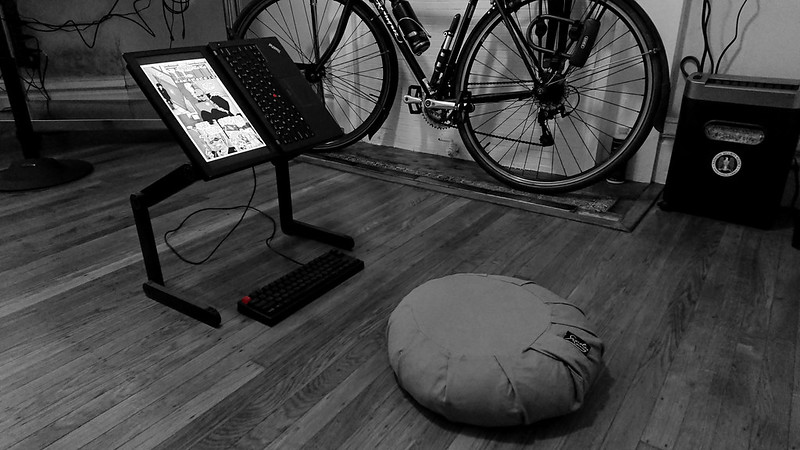Back in 2013 Brian Green published a review of the Lunatec Trekr washcloth. My showers haven’t been the same since.
The Trekr is a simple nylon scouring cloth, measuring 11” x 11”, with an elastic loop for hanging. It’s the same material as a synthetic loofah, but being a flat cloth it doesn’t hold moisture. At the time Brian posted the review I was on a campaign to eliminate sponges and sponge-like things from my life. Any cleaning tool in the bathroom or kitchen that holds water becomes a Petri dish for bacteria, in humid areas especially so. I bought the Trekr to try at home, and it immediately earned a spot in my daily ablutions.
Lunatec’s marketing campaign for the Trekr revolves heavily around the cloth being “self-cleaning”, which just means that the material doesn’t absorb anything, dries quickly, and every time you use it you are cleaning it with soap and water. I think this claim is accurate, though I still throw them into the laundry every couple weeks, more as impetus to rotate the cloths than out of the need to clean them.
Shortly after acquiring the Trekr I learned that it was just a smaller take on the Salux cloth. Hailing from Nippon, the Salux is exactly the same material as the Trekr, but measures in at a longer 33” x 11”. The larger size makes it easy to scour your back, as demonstrated by the naked lady on their packaging.
I now own about half a dozen of the Salux cloths for use at home, and the same number of Trekr cloths. I throw a Trekr cloth in my bag whenever I’m showering away from home – travel, backpacking, at the gym, or after the axolotl tanks.
To use either the Trekr or Salux, I wet the cloth, give it a few gentle swipes across a bar of soap (it also works fine with liquid soap), and then start scrubbing from head to toes. The cloth lathers, cleanses, and exfoliates dead skin – which, as we learned from Gattaca is key to leading a successful life in our future eugenic utopia.
I have also tried the Lunatec Scrubr dishcloth, which is made of a thicker and more abrasive nylon. It is less exciting. I’ll occasionally use it to scrub a surface clean at home, but for backcountry dish cleaning the spatula reigns supreme.


